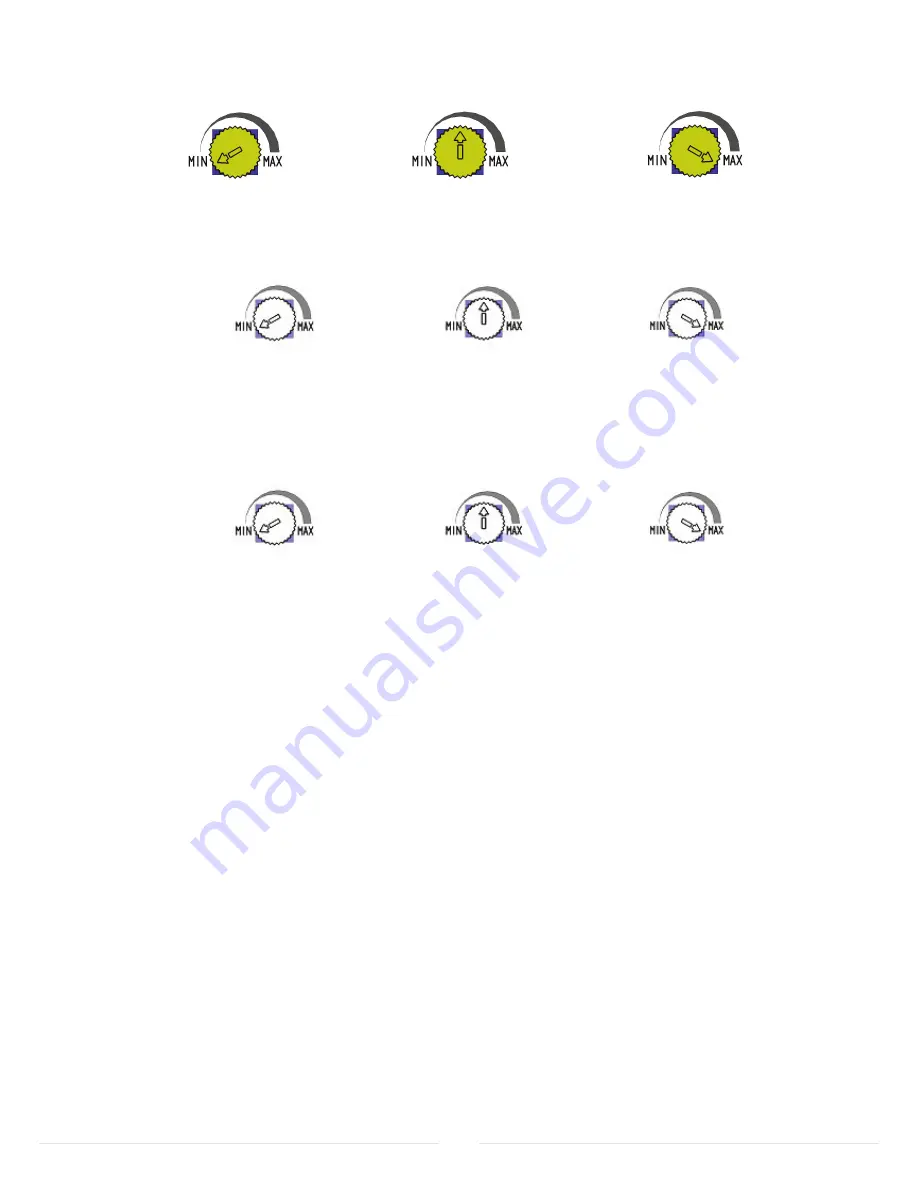
“FOR” TRIMMER - MOTOR FORCE/SPEED’
With the “FOR” trimmer the voltage that powers the motor during the manoeuvre can be adjusted, and hence its speed. If the trimmer is
in the minimum position the speed is equal to 50% of the maximum, the intermediate position is equal to 75% of the maximum.
ATTENTION: A variation of the “FOR” trimmer necessitates the repeat of the learning procedure because the manoeuvre times are
modified and consequently the moment in which the slow-down commences.
With electrical limit stops, the detection of an obstacle always provokes the inversion of motion during closure and the inversion for 2
seconds during opening.
With just an encoder, the detection of an obstacle always provokes the inversion of motion during closure and the inversion for 2
seconds during opening, except during the last 3cms of the manoeuvre.
With no electrical limit stops or encoder the obstacle detection provokes:
- during closure, the inversion of direction except during the last 5 seconds of manoeuvre, where it will STOP.
- during opening the inversion of direction for 2 seconds except during the last 5 seconds of manoeuvre, where it will STOP.
AUTOMATIC CLOSURE WITH TIMER MODE
Switch the dip-switch 3 to the ON position and dip-switch 2 to the OFF position.
In this mode, if a command is given via radio or via the “STR” input, the control unit:
- makes a one-second fixed pre-flash
- activates the motor at the speed set with the FOR trimmer
- the opening stops when the limit stop or the obstacle detection device intervenes, or when the manoeuvre time expires. If, during
opening, additional commands are given, they will not have any effect.
- with the automation at a standstill and in automatic pause, each time a command is received, the pause count will restart from zero.
When the pause time has elapsed, the closing manoeuvre occurs and the control unit:
- makes a one-second fixed pre-flash
- activates the motor for one second at reduced speed (Softstart) and then at the speed set with the FOR trimmer.
- if a command is received during closure, the control unit commands the complete re-opening.
- the closure terminates when the limit stop or obstacle detection device intervenes or when the manoeuvre time expires.
ATTENTION: Maintaining the opening contact closed (“STR” terminal), for example with a time delay relay, the control unit commands
opening and the operator remains open with automatic closing excluded until the contact is re-opened (Company Function).
STEP BY STEP MODE WITHOUT AUTOMATIC CLOSING
Switch the dip-switch 3 to the OFF position and dip-switch 2 to the ON position.
The step by step sequence to the controls is: OPEN-STOP-CLOSE-STOP.
The opening and closing manoeuvres happen according to the mode described in the preceding paragraph.
STEP BY STEP MODE WITH AUTOMATIC CLOSING
Switch the dip-switch 3 to the ON position and dip-switch 2 to the ON position.
The step by step logic is OPEN/STOP/CLOSE/STOP.
When the opening manoeuvre is completed and the pause time set by the PAU trimmer has elapsed, the control unit commands the
automatic closing.
6
EXAMPLE
velocità 50%
velocità 75%
velocità 100%
“PAU” TRIMMER - PAUSE TIME
The “PAU” trimmer is used to set the pause time of the control unit when the automatic closing is enabled with DIP 3. The pause time
can be set between 3 and 60 seconds and is increased by turning the trimmer clockwise.
EXAMPLE
tempo di pausa circa 1 sec.
tempo di pausa circa 30 sec.
tempo di pausa circa 60 sec.
“OBS” TRIMMER - OBSTACLE SENSITIVITY
The “OBS” trimmer is used to adjust both the delay for the intervention when an obstacle is detected and the counter force necessary to
trigger the intervention. Both the intervention time and the counter force are increased by turning the trimmer clockwise. The OBS
intervention delay can be adjusted between 0.1 and 3 seconds.
This function is useful to overcome any critical points of the automation when, for a short period of time, there is an increased absorption
of current by the motor.
.
EXAMPLE
tempo di intervento 0.1 sec.
tempo di intervento 1.5 sec.
tempo di intervento 3 sec.









